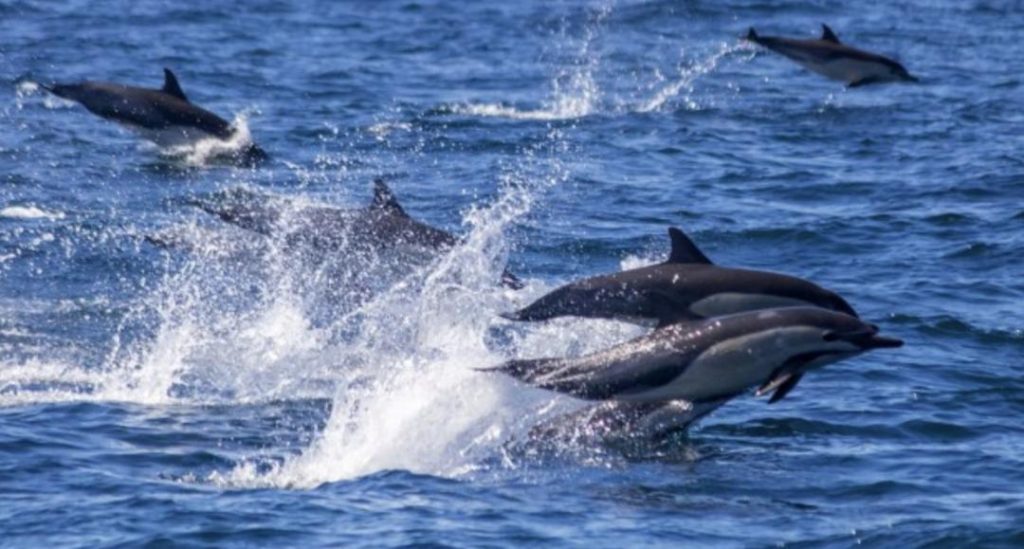
Dolphins & Whales Regularly Socialise with Each Other: Study
In a fascinating discovery, researchers from Griffith University have found that dolphins and whales regularly socialise with each other, engaging in playful interactions that are often mutual. The study, which analyzed videos and photographs of 199 separate events involving 19 different species, provides new insights into the complex relationships between these marine mammals.
The researchers examined interactions between baleen whales and dolphins, including humpback whales, blue whales, and sperm whales, as well as various dolphin species, including bottlenose dolphins and orca. They found that these social gatherings were surprisingly common, with playful interactions occurring in approximately 70% of the observed events.
One of the most common behaviors observed was dolphins swimming near the head of a whale. This interaction, known as “head-hugging,” was seen in 35% of the events studied. The researchers believe that this behavior may be a form of social bonding or even a way for the dolphins to communicate with the whales.
Bottlenose dolphins were the most involved dolphin species in these interactions, accounting for 60% of the observed events. This is not surprising, given that bottlenose dolphins are known to be highly social and intelligent animals.
Other behaviors observed in the study included dolphins swimming alongside whales, playing with whales’ fins, and even breaching (jumping out of the water) in close proximity to the whales. These playful interactions were often initiated by the dolphins, and the whales seemed to respond with curiosity and engagement.
The study’s lead author, Dr. Rodrigo Villanueva, explained that the findings challenged the traditional view of dolphins and whales as solitary animals. “Our study shows that these two groups are not as separate as we thought,” he said. “They are interacting with each other, and these interactions are not just limited to feeding or mating. They are actually playing and socializing together.”
The researchers believe that these social interactions may play an important role in the development of complex behaviors and social structures in both dolphins and whales. By studying these interactions, scientists can gain a deeper understanding of the evolution of social behavior in these species.
The study’s findings have also raised new questions about the cognitive abilities of dolphins and whales. If these animals are capable of complex social interactions, what does this say about their intelligence and capacity for communication?
Dr. Villanueva and his team are continuing to study the social behavior of dolphins and whales, using a combination of observational research and experiments to better understand these complex interactions. As we learn more about the social lives of these incredible animals, we may uncover even more surprising insights into their behavior and intelligence.
In conclusion, the study’s findings provide a fascinating glimpse into the social lives of dolphins and whales. By recognizing the complexity and playfulness of their interactions, we can gain a deeper appreciation for the intelligence and social nature of these incredible animals. As we continue to study and learn more about these species, we may uncover even more surprising insights into their behavior and intelligence.






